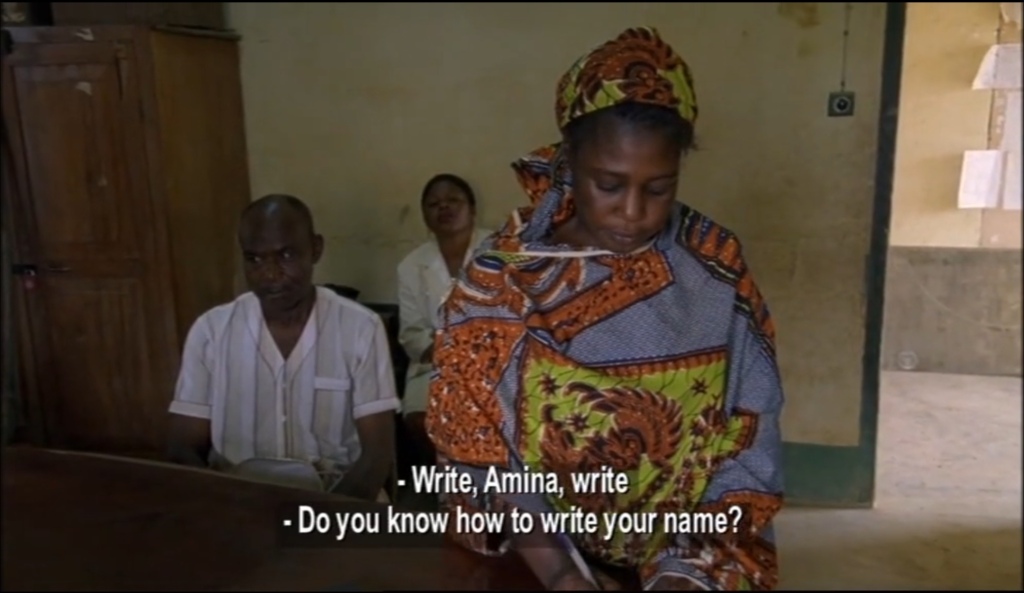We were tasked to analyse the “Divorce Sequence” from Sisters in Law (Kim Longinotto, 2005). Throughout the sequence, Longinotto once again employs the key elements of film form in a variety of naturalistic and unobtrusive ways.
The sequence opens on a wide establishing shot that exhibits a rural vista of Kumba. This exhibition of domestic life within the village is once again utilised by Longinotto to separate the court cases from each other in a subtle and authentic manner. We then cut to a divorce procedure within a small, densely packed room which is framed claustrophobically. By physically moving out of the way, Longinotto attempts to remain as unobtrusive as possible. She does not want the camera’s presence to influence the procedure in any way.
Once again, the two sides of the law are separated by two different two-shots, one exhibiting the court and one displaying the couple. The court initially addresses Amina, the woman seeking divorce, in a commanding and austere manner whereas the man is spoken to politely and formally. After Amina states that she has received legal advice, the council uses harsh phrases such as “you have to do as we say!” and “what we say must be!”, the prevalent gender inequality present throughout the country is reinforced. Longinotto accentuates this hostility by frequently cutting between the two two-shots and additionally implementing the use of an over-the-shoulder shot. Through this, the oppression that Longinotto is seeking to bring to light is epitomised and Amina’s vulnerable position is highlighted. Due to this behaviour, we can infer that at this point, the court is acting in a ‘normal’ manner and Longinotto seems to have no impact on the events unfolding. Because of this, Longinotto’s aims are ultimately achieved, and the observational documentary has been successful.

After the court begin to realise they are on camera, the case takes a complete U-turn. Firstly, the men acknowledge the danger Amina is facing in a light-hearted manner by exclaiming that the man will “split [her] open!’. The divorce is then granted to Amina, despite almost exiling her from the village moments earlier. The man now noticeably plays up to the camera, stating that “that’s what Cameroon wants! We don’t want problems”. This demonstrates that the camera has influenced the outcome of the trial, perhaps due to the fact that Longinotto seems to have stepped closer to the subjects. Finally, a questionably celebratory atmosphere is present within the council, arousing suspicion within the viewer due to the stark juxtaposition of events in such a short span of time.